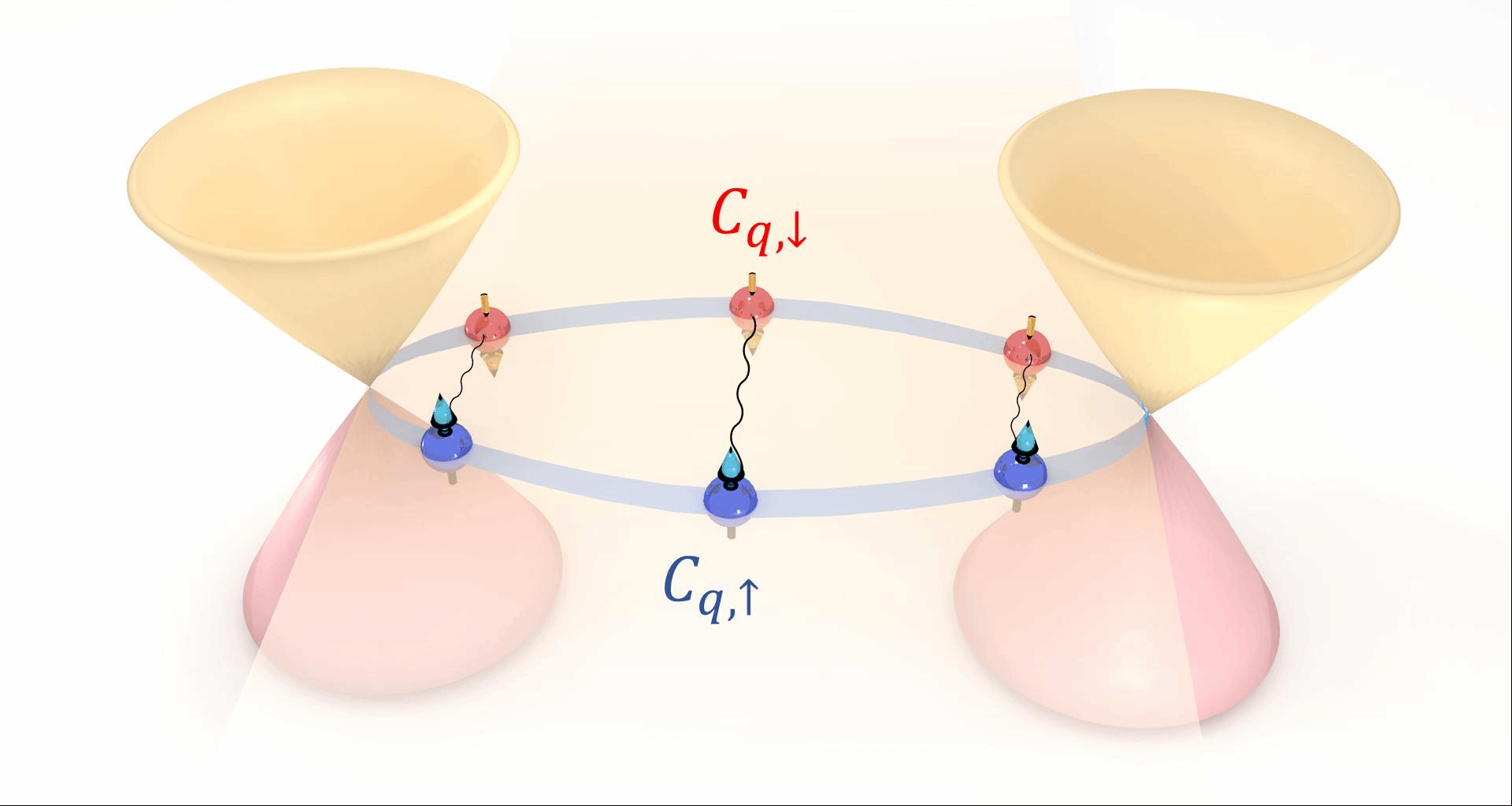Our group observed the surface superconducting state of Cd3As2 in the heterojunction between topological semimetal Cd3As2 and superconductivity. On May 17th, the relevant research findings were published online in Nature Communications (DOI: 10.1038/s41467-019-10233-w) under the title “Proximity induced surface superconductivity in Dirac semimetal Cd3As2”. Professor Faxian Xiu is the corresponding author, and doctoral student Ce Huang from our group and doctoral student Tong Zhou from the Jintuan Luo’s research group at the Hong Kong University of Science and Technology are the co first authors.
The Majorana fermion is a novel quasi-particle that satisfies non-Abelian statistics and is the material foundation for achieving fault-tolerant topological quantum computing. In recent years, topological superconducting materials have become one of the important research directions in the field of condensed matter physics due to the presence of Majorana fermions in their boundary states. Transforming topological materials into superconducting states is one of the effective methods for exploring topological superconductivity. As a new type of topological quantum material, three-dimensional topological semimetals have Dirac cone structures in their energy bands and a rich variety of non-trivial surface boundary topological states, making them an ideal system for realizing Majorana fermions. To achieve topological superconductivity in topological semimetals, it is first necessary to transform these boundary states into superconducting states. Although there have been many predictions in theory, there is currently no complete experimental confirmation of the superconducting forms of these boundary states.
To achieve superconductivity of topological semimetals, our group, based on the previous research on the surface state transport of three-dimensional Dirac semimetal Cd3As2 nanosheets in the Fermi arc, collaborated with research groups such as Kam Tuen Law from the Hong Kong University of Science and Technology to evaporate a layer of superconductive Nb on Cd3As2 nanosheets, forming Nb/Cd3As2 and Nb/Cd3As2/Nb heterojunctions, and transferred superconductivity to Cd3As2 through the nearest neighbor effect. Research has shown that in the interface of Nb/Cd3As2, differential conductivity spectrum transport measurements have revealed wide conductivity plateau and zero bias wide peaks, corresponding to the surface Fermi arc and bulk state superconductivity of Cd3As2, respectively, and the coupling between Fermi arc and superconductivity is much stronger than that of bulk state. By changing the thickness of Cd3As2, the surface Fermi arc and bulk state specific gravity of Cd3As2 can be changed, and corresponding changes in Fermi arc and bulk state superconducting energy gaps can be observed. Meanwhile, the theoretical simulation of Nb/Cd3As2 by the Jintuan Luo’s research group further confirmed the observed Fermi arc and bulk superconductivity.
Based on the excellent superconducting proximity effect of Nb/Cd3As2, we studied the physical properties of Cd3As2 based Josephson junctions (Nb/Cd3As2/Nb). Through Superconducting Quantum Interference measurement, it was observed that the superconducting current almost completely flows through the upper and lower surfaces of Cd3As2. In the experiment, the relationship between the superconducting critical current and the magnetic field is a SQUID shape. This is very different from the surface state superconducting current characteristics of similar topological insulators in the past. In topological insulators, the surface states are isotropic and interfere with each other in various directions, making it difficult to form good boundary currents in a single direction. Additionally, it is necessary to adjust the Fermi level to the energy gap of the body state to avoid the influence of the body state. However, in the three-dimensional Dirac semimetal Cd3As2, due to the significant difference in the superconducting coupling ability between the body state and the surface Fermi arc, the interference of the body state can be avoided, so that the surface state only exists on both sides of the y-direction, which can form a perfect surface superconducting current. These characteristics are strong evidence of Cd3As2 Fermi arc superconductivity.

Figure. Schematic diagram of Cd3As2 Fermi arc superconductivity
This research achievement for the first time achieved superconductivity of Fermi arcs in three-dimensional topological semimetals (as shown in the figure), which is equivalent to a high-dimensional analogy of one-dimensional superconducting boundary states of two-dimensional quantum spin Hall insulators, and is of great significance for a deeper understanding of boundary state superconductivity; Meanwhile, based on theoretical predictions, the superconducting Fermi arc of Cd3As2 can achieve a new manifestation of the Majorana Fermion in the a.c. Josephson effect: the Majorana flat band. This provides new ideas and experimental methods for exploring topological superconductivity, and also provides a preliminary scientific research foundation for the final implementation of topological quantum computers.
Paper link: https://www.nature.com/articles/s41467-019-10233-w